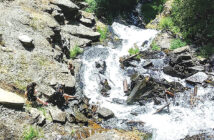Work: it is something we have to do, whether we want to or not. Some of us do it not for money but for for satisfaction and self worth. Some jobs afford us a way to change things, but that involves patience. Slow and steady wins the race as they say. Art can make it more interesting and accessible.
I purchased book in 2010 called “Local Motion: The Art of Civic Engagement in Toronto,” by Dave Meslin. The city of Toron certainly cannot be much different in its structure than Chesterfield County. But as I pulled the book off of the shelf with the notion of finding inspiration for this week’s column, I was hooked. Maybe Toronto, which has nothing on Chesterfield’s weather, is actually a lot different from our 423 square miles in the way it is run.
I was involved in building, what amounts to a city, in Israel some 24 years ago. Israelis and Palestinians alike worked on the project, which extended to the horizon from where my little project was located. The building of homes was paramount but was not the entire goal. Glasnost allowed over one-million Russian Jews to immigrate to Israel and there was no place to put them, so settlements grew from the ground like dandelions in an unkempt lawn.
Included in these city-etts were artistic ideas. Center courts each surrounded withabout 30 houses, walking paths connecting them, small desert plans hugged community centers doubling as bomb shelters and a central village square for shoppers to walk or ride bicycles to was nearby.
How could anyone not agree with a bicycle and trail plan; and yet we have a difficult time moving it though our county government? Meslin, in “Local Motion” quotes an elected official who said, “We’re not going out of our way to deny people the opportunity to understand what’s going on. We just weren’t making the time to re-think our standard statutory notices.” (public notices).
In Chesterfield we see blue signs the size of “for sale” or “yard sale” signs and wonder what they mean. When we turn to the legal notices page in the Times-Dispatch the type is so small we do not bother to read them and move on.
“In general, Letchford aimed for far fewer words, going back to legislation in order to figure out the minimum that were required. She combed out “legalese” and redundant information, and upped point sizes, so that signs would actually be readable from a car. And she began including images of what the proposed property would look like.
The idea is phenomenal and so are the results. Art in government, who would have thunk it?


